From Homer to Homer Simpson
Plot, or the engineering of a story
Adam Hochschild, the author of 10 books that blend history, journalism, and storytelling, once wrote about visiting with a young cousin who was studying civil engineering. “I’ve never really understood,” the ever-curious journalist asked his cousin. “What’s the difference between an architect and an engineer?”
His cousin obliged, answering: “An architect is the person who plans what the skyscraper is going to look like from the outside. An engineer is the person who makes sure it doesn’t fall down.”
Hochschild, as a master of the craft, used this comment as a springboard to riff on narrative structure:
I’ve always felt that when we think about writing, we pay too much attention, in these terms, to the architecture, and not enough to the engineering. We focus on the outside of the skyscraper—the sparkle of someone’s prose, images, metaphors, bits of description—and not enough on the innards: the structure, the plot (a word that applies to nonfiction as much as to fiction), the careful doling out or withholding of information to create suspense, all of which, in the long run, ultimately determines whether or not we keep on reading. A piece of writing can sparkle aplenty from one paragraph to the next, but if the inner engineering isn’t there, our attention wanders.
Hochschild’s ruminations launch an essay on Nieman Storyboard called
 “Watch Kurt Vonnegut demystify story structure with a fairy tale and a piece of chalk.” I highly recommend the essay to writers interested in how to structure a story—and especially to those who are visual learners. You get two great writers in one here. Vonnegut classifies narrative arcs that persist throughout history, and, he argues, they reveal that substance is secondary to storied curvature.
“Watch Kurt Vonnegut demystify story structure with a fairy tale and a piece of chalk.” I highly recommend the essay to writers interested in how to structure a story—and especially to those who are visual learners. You get two great writers in one here. Vonnegut classifies narrative arcs that persist throughout history, and, he argues, they reveal that substance is secondary to storied curvature. Writers of all genres, of course, look back to literature to understand how to tell stories. Many focus on classic elements of drama, looking to seminal playwrights for clues. As illustrated by Vonnegut’s analysis, William Shakespeare’s Hamlet follows an arc familiar to all who heard “Cinderella” as a child. We are given a title character whose fickle fortune bends towards devastation before ascending towards salvation.
Another playwright often cited by fiction writers is Anton Chekhov, who famously wrote to a friend, “If in the first act you have hung a pistol on the wall, then in the following one it should be fired. Otherwise don’t put it there.”
The principle of “Chekhov’s gun” has evolved into the principle that every element in a story must be necessary, and irrelevant elements should be removed. That “principle,” by the way, was an idea recorded in letters several times by Chekhov, with some variation. In a letter to Aleksandr Semenovich Lazarev in 1889, Chekhov wrote, “One must never place a loaded rifle on the stage if it isn’t going to go off. It’s wrong to make promises you don’t mean to keep.” Chekhov was being figurative here; the “gun” he refers to is a monologue Chekhov deemed superfluous and unrelated to the rest of the play.
The novelist P.G. Wodehouse didn’t refer to Chekhov’s gun, exactly, but he told The Paris Review (in the Winter 1975 issue) that he did take his lead from playwriting:
The principle I always go on in writing a novel is to think of the characters in terms of actors in a play. I say to myself, if a big name were playing this part, and if he found that after a strong first act he had practically nothing to do in the second act, he would walk out. Now, then, can I twist the story so as to give him plenty to do all the way through? I believe the only way a writer can keep himself up to the mark is by examining each story quite coldly before he starts writing it and asking himself it is all right as a story. I mean, once you go saying to yourself, “This is a pretty weak plot as it stands, but if I'm such a hell of a writer that my magic touch will make it okay,” you're sunk. If they aren't in interesting situations, characters can't be major characters, not even if you have the rest of the troop talk their heads off about them.
Modernist manuals of writing often conflate story with conflict. This reductionism reflects a culture that inflates aggression and competition while cultivating ignorance of other behavioral options. No narrative of any complexity can be built on or reduced to a single element. Conflict is one kind of behavior. There are others, equally important in any human life, such as relating, finding, losing, bearing, discovering, parting, changing. Change is the universal aspect of all these sources of story. Story is something moving, something happening, something or somebody changing.
“Character is plot, plot is character,” quipped F. Scott Fitzgerald. Like the author of The Great Gatsby, the biographer Jean Lee Latham wrote that the reader “is interested in what happens because he is interested in the character it happens to. No incident has any place in the story unless it has an emotional impact on the character.”
Plot is no more than footprints left in the snow after your characters have run by on their way to incredible destinations. Plot is observed after the fact rather than before.... It is human desire let run, running, and reaching a goal. It cannot be mechanical. It can only be dynamic. So, stand aside, forget targets, let the characters, your fingers, body, blood, and heart do.
People who read for plot, people who suck out the story like the cream filling in an Oreo, should stick to comic strips and soap operas…. Every book worth a damn is about emotions and love and death and pain. It's about words. It's about a man dealing with life. Okay?
—Constance Hale
| |
Share This:




